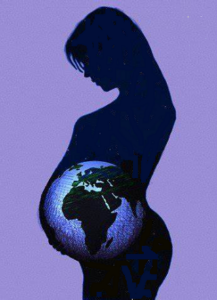
Arquivo para December 23rd, 2020
Spherelogy, intimacy and exteriority
It is not by chance that Sloterdijk praises Gaston Bachelard at the beginning of Spheres I, his approach has a deep dialogue with Bachelard’s poetics of space, as both the intimacy theme is linked to articulation and two conceptions: “exteriority” and “space”.
at the beginning of Spheres I, his approach has a deep dialogue with Bachelard’s poetics of space, as both the intimacy theme is linked to articulation and two conceptions: “exteriority” and “space”.
The first point is to understand that the phenomenological approach has a direct influence on Heidegger’s Being and Time, at the same time that they outline criticisms, even though Heidegger did not dwell deeply on the theme, it is between the lines of his work.
In the opening chapter, Sloterdijk refers to the human with the so-called “erratic blocks”, in which the astonishment at the “I” in the world would be like these blocks that “are there”. In view of this, the possibility of consciousness being made with the world opens up.
The recognition of this condition of being played randomly in the world does not happen smoothly, but through “the unexpected, the rebellious and the disturbing that the ecstatic personal finding can be” (SLOTERDIJK, 2008, p. 16), erratic blocks were geological formations displaced in the last ice age.
The first volume is dedicated to the issue of intimacy and Sloterdijk part of the mother-baby relationship, we are joined to another body from the moment of conception, by a “rejected organ” that is the placenta, whereas in other times it was somehow ritualized, now the “original companion” is discarded as garbage.
He will point out from this (as he did with the prophet Jonas) to look for ways not explored by current philosophy, “the relationship, the connection, the fluctuation in an within-something and in a with-something, being contained in between” (SLOTERDIJK, 2016) and for this reason his spherology is his essential work.
I highlight Bachelard’s work because for him there is a perspective that I consider broader, that of describing the intimate experience in addition to the experience with the other, with the totality of the world.
This is also the case in Bachelard, in opposition to Heidegger, where he states: “From our point of view, from the point of view of a phenomenologist who lives from his origins, the conscious metaphysics that is located at the moment when being is ‘thrown into the world’ it is a second position metaphysics.” (BACHELARD, 1993, p. 27)
While Sloterdijk is the womb the primary “space”, the place of well-being, for Bachelard it is the home, the paradigmatic place of well-being and protection.
If we understand interiority as the place where we combine these two sensations: the womb that is the primordial house, and the house that is the space in the world where we co-inhabit with other beings, not just humans, of course, we can combine interiority and intimacy, and we have a new horizon not only metaphysical, but human, divine and between these two conjugations: the original womb, the common home and the final destination that interiority provides.
BACHELARD, G. (1994) A poética do espaço. Trad. Antônio de Pádua Danesi. Bransil. São Paulo: Martins Fontes.
SLOTERDIJK, P. (2008) O Estranhamento do Mundo. Trad Ana Nolasco. Lisboa: Relógio d’Água, 2008
SLOTERDIJK, P. (2016) Esferas I: bolhas. São Paulo: Estação Liberdade.

